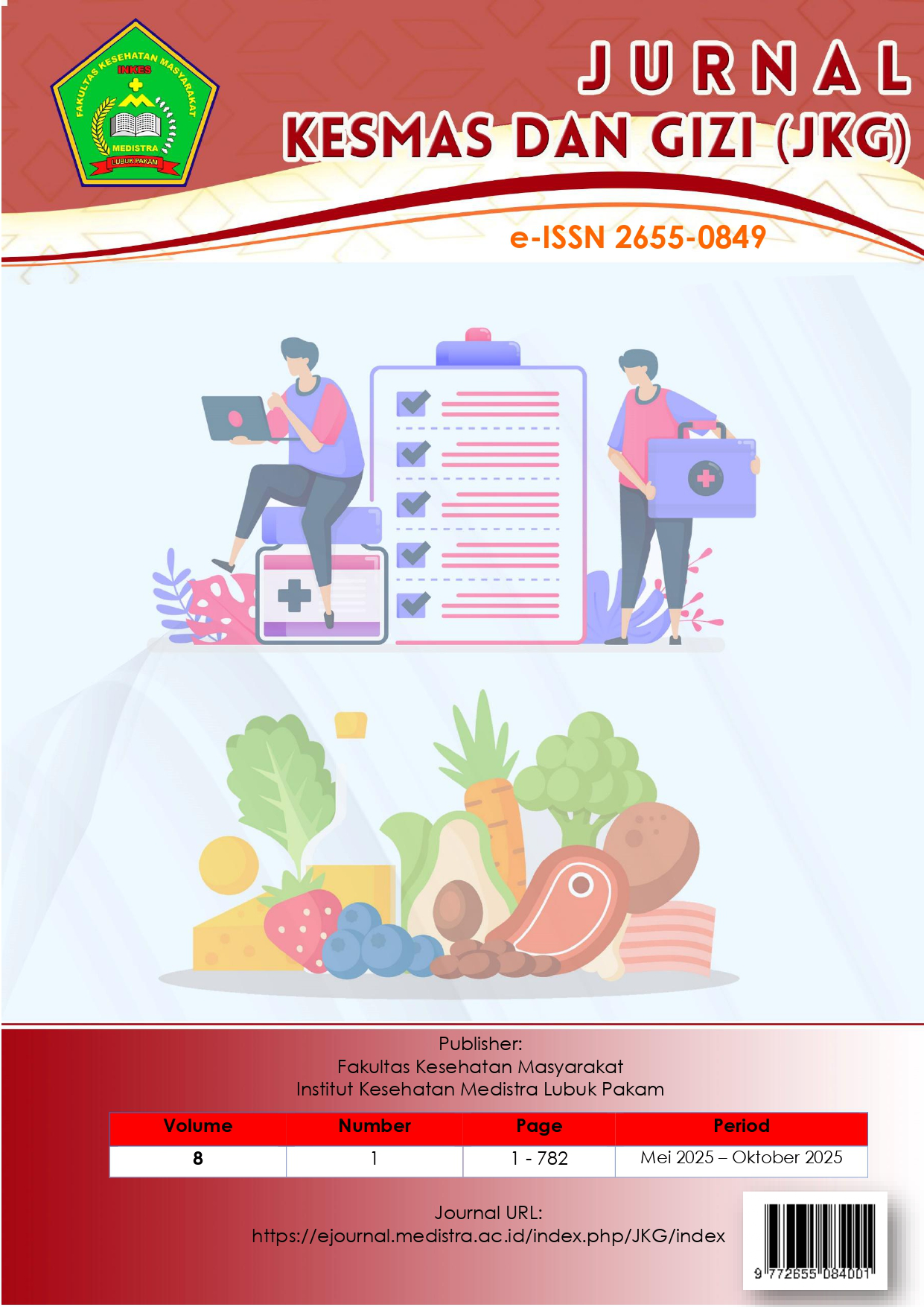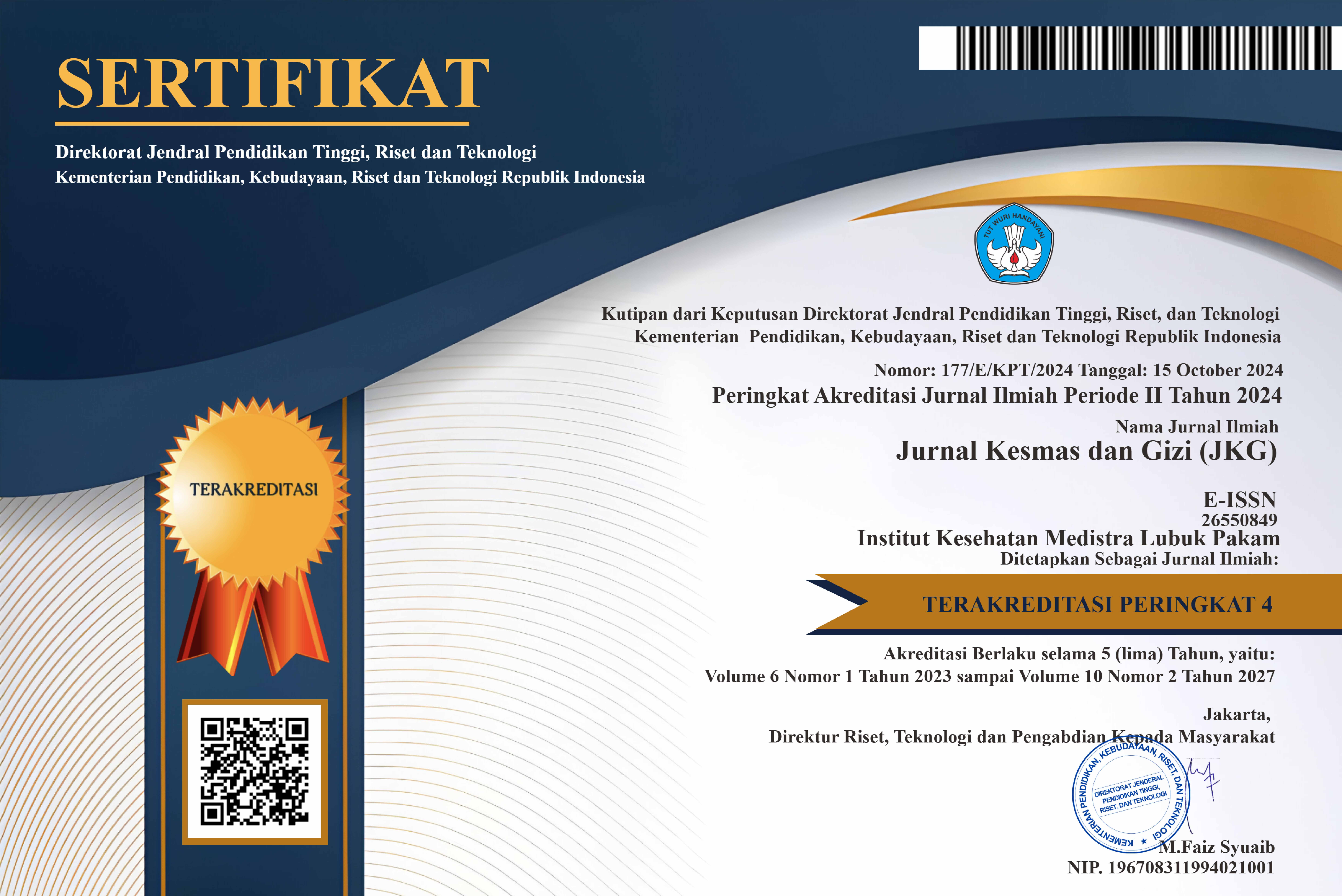Impact of the Increase in National Health Insurance Contributions on X-PBI Health Insurance Participants in Tanjungbalai City in 2025
DOI:
https://doi.org/10.35451/fc5cjt81Keywords:
Premium Increase, National Health Insurance, X-PBIAbstract
Problems in the health sector remain a major challenge in developing countries, where the role of the government is crucial in ensuring the availability of adequate health services for the community. Improving the quality of health services is one of the important steps to overcome various health problems that occur. The X-PBI group, which is individuals who have not fully met the criteria to receive full assistance (PBI) but still need partial subsidies, often has difficulty maintaining consistency in paying contributions. This study aims to analyze the impact of the increase in National Health Insurance (JKN) contributions on X-PBI participants in Tanjungbalai City in 2025. This study used a qualitative approach with purposive sampling technique to determine informants. Data were collected through in-depth interviews, and analyzed narratively. The results showed that the Tanjungbalai City local government has taken a number of steps such as providing education about JKN procedures and facilitating access to health services. However, the policy has not been fully effective, especially in improving the quality of services received by independent participants. Limited human resources and budget are the main obstacles in its implementation. Therefore, improving primary care through strengthening facilities, medical personnel, and community-based approaches is needed.
Downloads
References
[1] B. Murti, 2017, Dasar Dasar Asuransi Kesehatan, Penerbit Kansius, Yogyakarta Badan Penyelenggara Jaminan Sosial (BPJS) Kesehatan. (2023). Laporan Tahunan BPJS Kesehatan Tahun 2022. Jakarta: BPJS Kesehatan.
[2] Badan Penyenggara Jaminan Sosial, (2018). BPJS Kesehatan Tidak Layu Sebelum Berkembang. Diakses dari http://www.bpjs-kesehatan.go.id.
[3] Badan Pusat Statistik (BPS). (2020). Kota Tanjungbalai Dalam Angka. diakses dari https://tanjungbalaikota.bps.go.id
[4] Bangun, Y. (2018). Manajemen Pelayanan Kesehatan. Jakarta: Prenadamedia Group.
[5] BPJS Kesehatan. (2024). Cakupan Kepesertaan dan Informasi Iuran JKN. Diakses dari: https://bpjs-kesehatan.go.id
[6] BPJS Tanjungbalai. (2020). Data dasboardt BPJS-Tanjungbalai. Diakses dari bi-bpjs Kesehatan tanjungbalai.go.id, 2020
[7] Dinas Kesehatan Kota Tanjungbalai . (2019). Profil Dinas Kesehatan Kota Tanjungbalai. Tanjungbalai
[8] DJSN. (2020). Implementasi Program Jaminan Kesehatan Nasional . Diakses dari (www.djsn.go.id).
[9] Kementerian Kesehatan Republik Indonesia. (2024). Profil Kesehatan Indonesia Tahun 2023. Jakarta: Pusat Data dan Informasi Kemenkes.
[10] Kementerian Kesehatan RI. (2024). Dashboard Monitoring JKN. Diakses dari: https://pusdatin.kemkes.go.id
[11] Kementrian Kesehatan RI. (2019). Perubahan iuran Jaminan Kesehatan Nasional. Diakses dari www.jkn.kemkes.go.id
[12] Kent Buse, Nicolas Mays dan Gill Walt. (2005). Making Health Policy
[13] Mundiharno, 2017. Peta Jalan Menuju Universal Coverage Jaminan Kesehatan.Jurnal Legislasi Indonesia. Volume 9
[14] Mutiara, E.D, Djuhaeni, H; Wiwaha G. 2018. Analisis Faktor Yang Memengaruhi Intensi Masyarakat Menjadi Peserta Mandiri Jaminan Kesehatan Pada Masyarakat Kota Cirebon. Jurnal Fakultas Kesehatan Masyarakat Universitas Padjajaran, Bandung
[15] Pemerintah Republik Indonesia. (2024). Peraturan Pemerintah Nomor 28 Tahun 2024 tentang Penyelenggaraan Program Jaminan Kesehatan Nasional. Jakarta: Sekretariat Negara.
[16] Permenkes. (2023). Peraturan Menteri Kesehatan Republik Indonesia Nomor 03 Tahun 2023 Tentang Standar Tarif Pelayanan Kesehatan Tingkat Pertama dan Fasilitas Kesehatan Tingkat Lanjutan Dalam Penyelenggaraan Program Jaminan Kesehatan
[17] Pimada, M Laila. (2020). Dampak Kebijakan Kenaikan Iuran BPJS Terhadap Pengguna BPJS. Jurnal Ekonomi, Manajemen dan Akuntansi Vol. 4. No. 12020
[18] Pramudyo, A., & Susanti, D. (2022). Efektivitas Program JKN dalam Menjangkau Peserta Mandiri: Studi Kasus di Wilayah Perkotaan. Jurnal Kebijakan Kesehatan Indonesia, 11(2), 110–120. https://doi.org/10.xxxx/jkki.2022.xx
[19] Raharjo, T. (2021). Analisis Kepesertaan dan Pembiayaan JKN dalam Konteks Pemerintah Daerah. Jurnal Administrasi dan Kebijakan Publik, 8(1), 45–56.
[20] Rarasati, Desi. 2019. Dampak Kenaikan Tarif BPJS Kesehtan Terhadap Pelayanan Kesehatan di Kota Malang
[21] Siregar, F. A., & Lubis, H. (2023). Tantangan Implementasi JKN pada Peserta Non-PBI di Daerah. Jurnal Manajemen Pelayanan Kesehatan, 26(3), 221–230.
[22] Suparman, T. (2020). Fragmentasi Data Kepesertaan JKN: Tantangan dan Solusi. Jurnal Kesehatan Masyarakat Nasional, 15(4), 215–225.
[23] Widiastuti, I., & Amalia, S. (2021). Strategi Pemerintah Daerah dalam Menanggulangi Defisit Anggaran JKN. Jurnal Ekonomi dan Kebijakan Publik, 12(3), 185–194.
Downloads
Published
Issue
Section
License
Copyright (c) 2025 Dian Ramadha Sari, Herlina, Sri Melda

This work is licensed under a Creative Commons Attribution 4.0 International License.
Copyright in each article is the property of the Author.


























